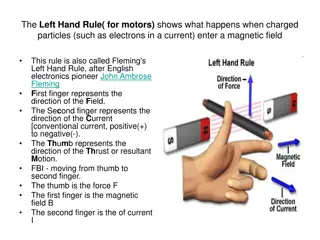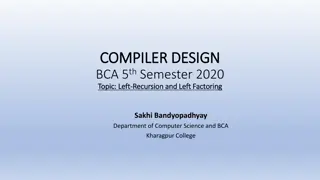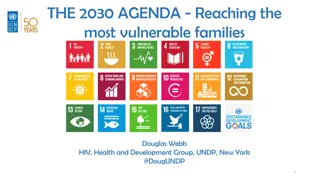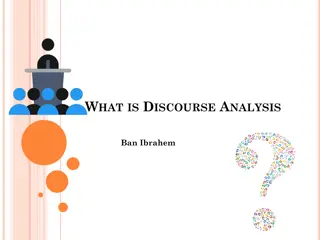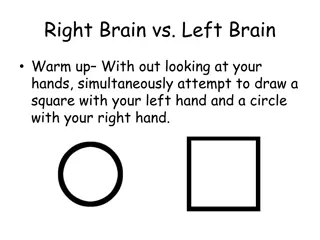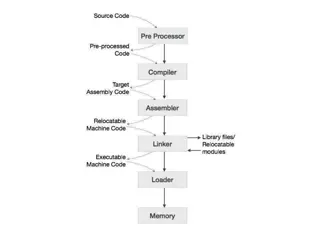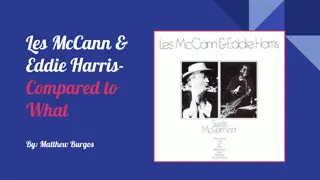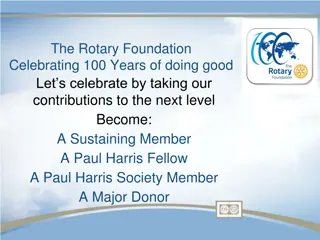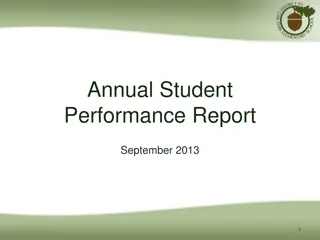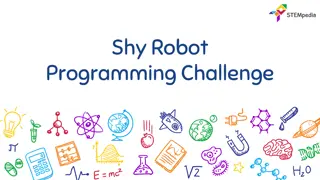
Empowering Consumers: Strategies for Universal Service in the Low Carbon Transition
Explore the concept of consumer empowerment and protection in the transition towards a low-carbon economy. Topics include market development, social justice, consumer choice, universal service provisions, and more, presented at the BIEE 2018 conference. Key themes encompass market arrangements, social welfare models, and the threshold approach to consumer decision-making.
Download Presentation

Please find below an Image/Link to download the presentation.
The content on the website is provided AS IS for your information and personal use only. It may not be sold, licensed, or shared on other websites without obtaining consent from the author. If you encounter any issues during the download, it is possible that the publisher has removed the file from their server.
You are allowed to download the files provided on this website for personal or commercial use, subject to the condition that they are used lawfully. All files are the property of their respective owners.
The content on the website is provided AS IS for your information and personal use only. It may not be sold, licensed, or shared on other websites without obtaining consent from the author.
E N D
Presentation Transcript
Noone Left Behind - Consumer empowerment, protection and universal service in the low carbon transition Chris Harris BIEE 2018
Agenda 1. Market development and arrangements 2. Social justice 3. Consumer choice 4. Universal Service and backstop provisions 5. Conclusions
Agenda 1. Market development and arrangements 2. Social justice 3. Consumer choice 4. Universal Service and backstop provisions 5. Conclusions
Linking Decentralised Markets Top down central station market Bottom up decentralised democratised market
Agenda 1. Market development and arrangements 2. Social justice 3. Consumer choice 4. Universal Service and backstop provisions 5. Conclusions
Key Elements of Social Model Society s Welfare Which society? Aggregation and Social Choice Welfarism and Paternalism Individuals Welfare Rational mistakes Information gaps; Psychology of bad choices Altruism and Commitment Individuals Choices Meaning of the Utility Function ; Preference-Satisfaction theory of the Good Rational Choice and examples of the lack of it Source. Beckerman, W. (2011) Economics as Applied Ethics Value Judgements in Welfare Economics Palgrave Individuals Preferences
The Threshold Approach to Consumers Threshold/s total Efficient under money metric Paternalist Welfarist policy Lexical Amount of wealth Choice enabled Choice challenged Gap to median 0 0 Number of people everyone
Inequality Effects of Efficiency Actions Drive market forward Rely on welfare system to resolve residual distributional issues Or prevent to avoid locally regressive outcome and bad choice risk? Externalities Efficiency Win-win but may be slow Iso-welfare less more Equality
Agenda 1. Market development and arrangements 2. Social justice 3. Consumer choice 4. Universal Service and backstop provisions 5. Conclusions
Basic Decision Architecture Opportunity set Decision process Outcomes Bad Best for all Best choice but unfair
Choices for Decision Architecture a) Restrict choice b) direct choice c) Ex post resolution c) Ex post resolution
Architecture for ex post Decision Resolution End of Pipe Regulatory/Policy/Structural Choice Architecture Resolution Sweep Up convert bad choices to good Consumers and Choices Collective lexical/cohort outcomes common themes Individual outcomes Sweep Up financial resolution of bad choices? End of Pipe Financial Resolution in Tax and Welfare and within Energy System
Financial Remedy for low Choice Resources not Bad Choices Less choice resource Bad choices Inadequate subsidy Less choice resources Bad choices Adequate choice resource Bad choices No subsidy deserved Less choice resource Good choices No subsidy needed Less choice resource Bad choice effect offset by subsidy Less choice resource But good choices Subsidy windfall Adequate choice resource Bad choices Undeserved offset received Cohort subsidy Adequate choice resource Good choices Windfall gain
Agenda 1. Market development and arrangements 2. Social justice 3. Consumer choice 4. Universal Service and backstop provisions 5. Conclusions
Income elasticity of normative and actual demand for essentials and non essentials a) Normative/Paternal b) Actual/Libertarian Spend Spend NE Threshold heat requirement E H Income Income at threshold Income of individual n NE= non essential H= heat E=other essentials
Policy Choices for Subsidy Spend Discretion Libertarian bad financial choices (spend on other things) Potentially welfare inefficient Give money Offset to energy bills Give insulation and other kit Welfare maximum Paternal
Agenda 1. Market development and arrangements 2. Social justice 3. Consumer choice 4. Universal Service and backstop provisions 5. Conclusions
GOVERNMENT/REGULATOR Fiscal solutions for universal service and backstop provision Choice enablement/ support Fiscal resolution/ redistribution OUTCOMES PROSUMERS Individual benefits with negative externalities resolved Individual benefits with positive externalities Innovative take-up develops the market Civic responsibility Decision Architecture Procurement Rhythm of life Market access Universal service and backstop provision Innovation PRIVATE SECTOR
Thanks Chris.Harris@npower.com


